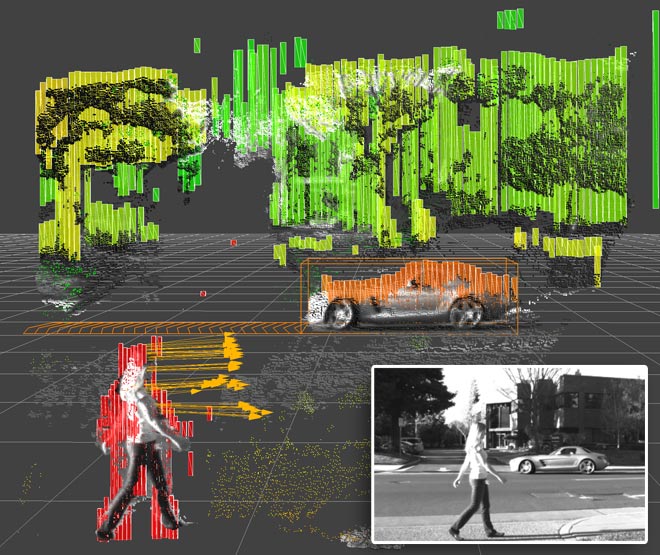course description
Computer vision aims to develop methods that enable machines to gain the ability to analyze and understand the visual inputs. This undergraduate level course is intended for introducing the fundamental topics of computer vision. In this context, we will first start from the low-level image perception aspects, such as image formation, cameras, color and continue with mid-level vision topics, such as interest point detection and local feature extraction. The course will also introduce the fundamentals of high-level vision tasks, such as face detection/recognition, object recognition and human motion analysis.
Prerequisites: linear algebra, basic knowledge of probability and statistics, good programming skills. It is strongly recommended that you take BBM406 - Introduction to Machine Learning course before taking this class.
course logistics
Instructor: Nazli Ikizler Cinbis , nazli -at- cs.hacettepe.edu.tr
Office: 112, Office Hours: by appointment via email
Lecture Hours: Tuesdays 13:00-15:45
Lecture Room: D8
textbooks
Not required, but strongly suggested
- Computer Vision: Algorithms and Applications, by Richard Szeliski, Springer, 2010. (Available free online)
- Computer Vision: A Modern Approach (2nd edition), by D.A. Forsyth and J. Ponce, Prentice Hall, 2011.
- Learning OpenCV, by Gary Bradski & Adrian Kaehler, O'Reilly Media, 2008.
- Pattern Classification (2nd Edition), by R.O. Duda, P.E. Hart, and D.G. Stork, Wiley-Interscience, 2000.
grading policy
- Midterm exam %25
- Class participation %5
- Project %30
- Final exam %40
Project: The project will involve designing and implementing a computer vision system towards solving a fundamental vision problem. The project can be carried out individually or in groups of two.
In the context of BBM418 Computer Vision Laboratory, the students are required to complete three programming assignments (%80) and there will be three quizzes (%20).
communication
For announcements, updates and lecture notes, please register to
Piazza BBM416 .
schedule (tentative) - Will be updated soon
| Date |
Topic |
Slides |
Readings |
Assignments |
|
Introduction to computer vision |
.ppt |
Szeliski 1 |
|
|
Image formation, camera and color |
.ppt |
Szeliski 2, FP 1.1,3.1,3.3 |
|
|
Filters, Templates and Image Pyramids |
.ppt |
Szeliski 3.2, FP 4 |
|
|
Interest points and image features |
.ppt |
Szeliski 4.1, FP 5 |
|
|
Edge Detection, line fitting |
.ppt |
Szeliski 4.1, FP 8 |
|
|
Machine learning: clustering and classification overview |
.ppt |
Szeliski 5 |
|
|
Midterm Exam |
|
|
|
|
Instance recognition, bag-of-words models |
.ppt |
Szeliski 14.2, Szeliski 14.3, FP 16 |
|
|
Object detection with sliding windows |
.ppt |
Szeliski 14.1, FP 17 |
|
|
Motion analysis and Tracking |
.ppt |
FP 11 |
|
|
Human Action Recognition |
.ppt |
|
|
|
Image Retrieval |
.ppt |
FP 21 |
|
|
Advanced Applications |
.ppt |
|
|
|
Project presentations |
|
|
|
useful links
